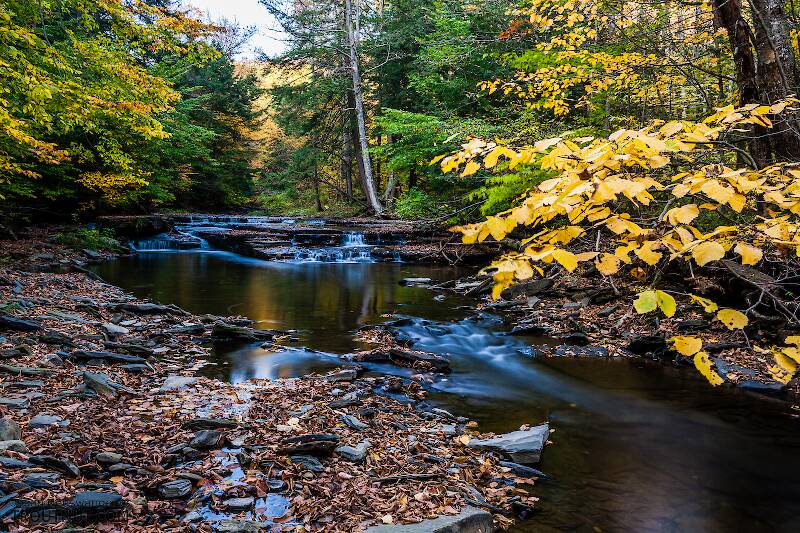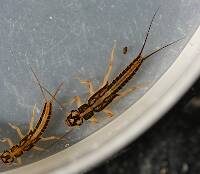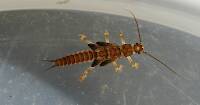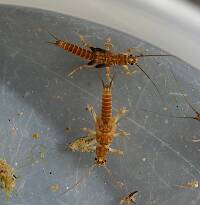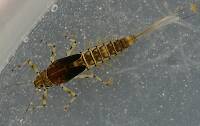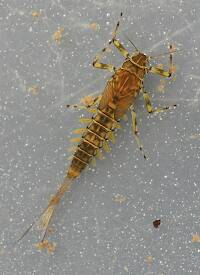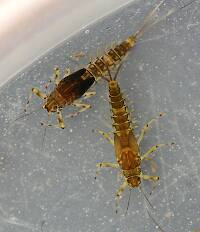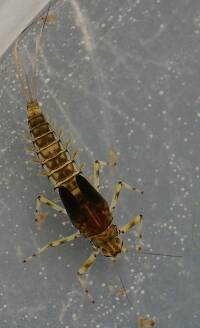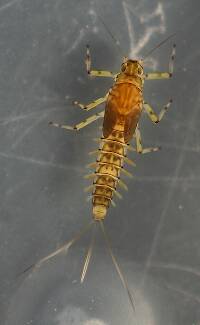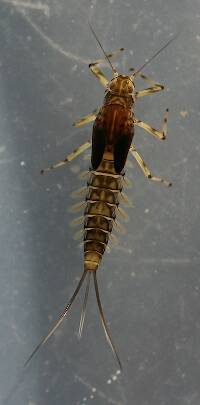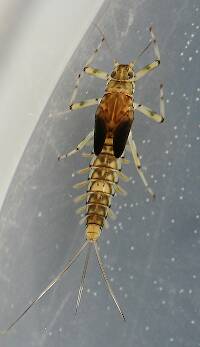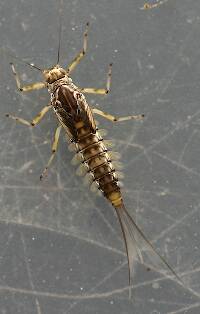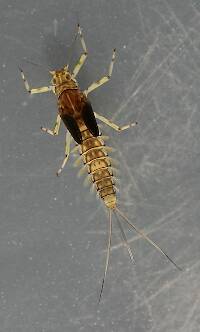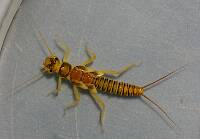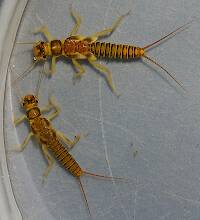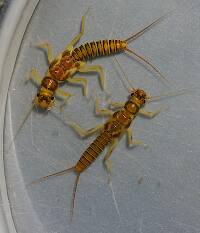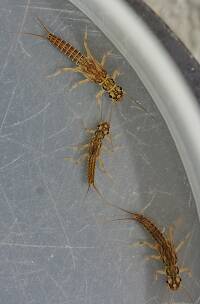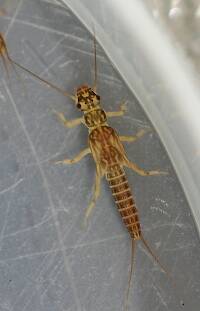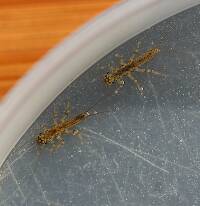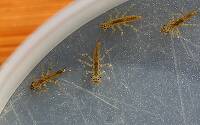
Blue-winged Olives
Baetis
Tiny Baetis mayflies are perhaps the most commonly encountered and imitated by anglers on all American trout streams due to their great abundance, widespread distribution, and trout-friendly emergence habits.
Featured on the forum
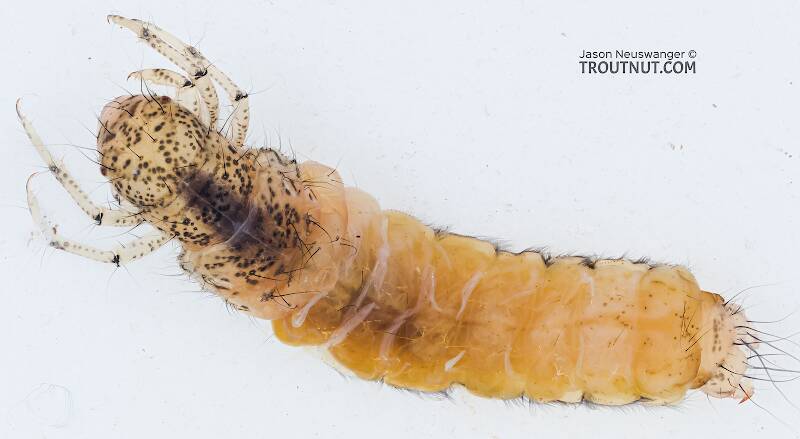
This is a striking caddis larva with an interesting color pattern on the head. Here are some characteristics I was able to see under the microscope, but could not easily expose for a picture:
- The prosternal horn is present.
- The mandible is clearly toothed, not formed into a uniform scraper blade.
- The seems to be only 2 major setae on the ventral edge of the hind femur.
- Chloride epithelia seem to be absent from the dorsal side of any abdominal segments.
Based on these characteristics and the ones more easily visible from the pictures, this seems to be Grammotaulius. The key's description of the case is spot-on: "Case cylindrical, made of longitudinally arranged sedge or similar leaves," as is the description of the markings on the head, "Dorsum of head light brownish yellow with numerous discrete, small, dark spots." The spot pattern on the head is a very good match to figure 19.312 of Merritt R.W., Cummins, K.W., and Berg, M.B. (2019). The species ID is based on Grammotaulius betteni being the only species of this genus known in Washington state.
- The prosternal horn is present.
- The mandible is clearly toothed, not formed into a uniform scraper blade.
- The seems to be only 2 major setae on the ventral edge of the hind femur.
- Chloride epithelia seem to be absent from the dorsal side of any abdominal segments.
Based on these characteristics and the ones more easily visible from the pictures, this seems to be Grammotaulius. The key's description of the case is spot-on: "Case cylindrical, made of longitudinally arranged sedge or similar leaves," as is the description of the markings on the head, "Dorsum of head light brownish yellow with numerous discrete, small, dark spots." The spot pattern on the head is a very good match to figure 19.312 of Merritt R.W., Cummins, K.W., and Berg, M.B. (2019). The species ID is based on Grammotaulius betteni being the only species of this genus known in Washington state.

Troutnut is a project started in 2003 by salmonid ecologist Jason "Troutnut" Neuswanger to help anglers and
fly tyers unabashedly embrace the entomological side of the sport. Learn more about Troutnut or
support the project for an enhanced experience here.
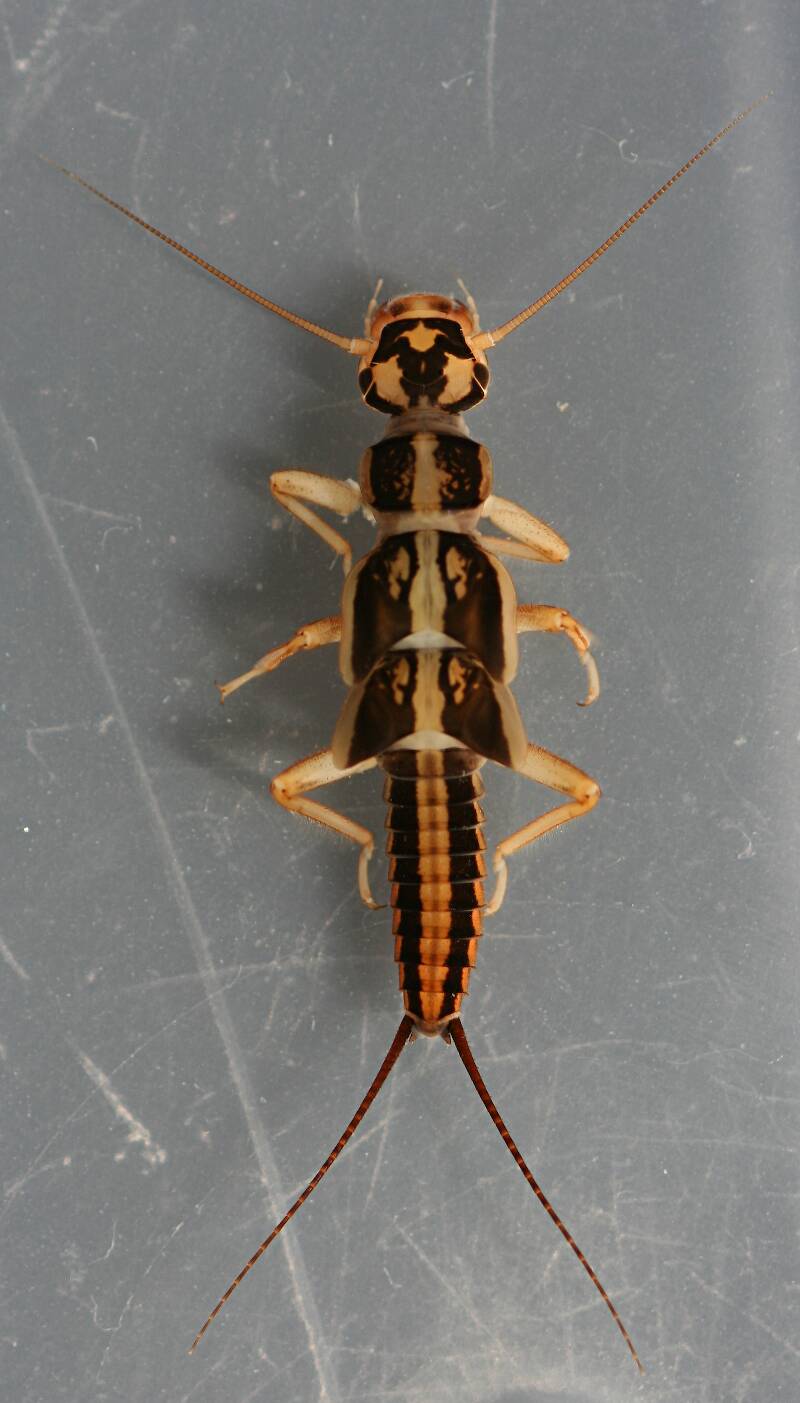
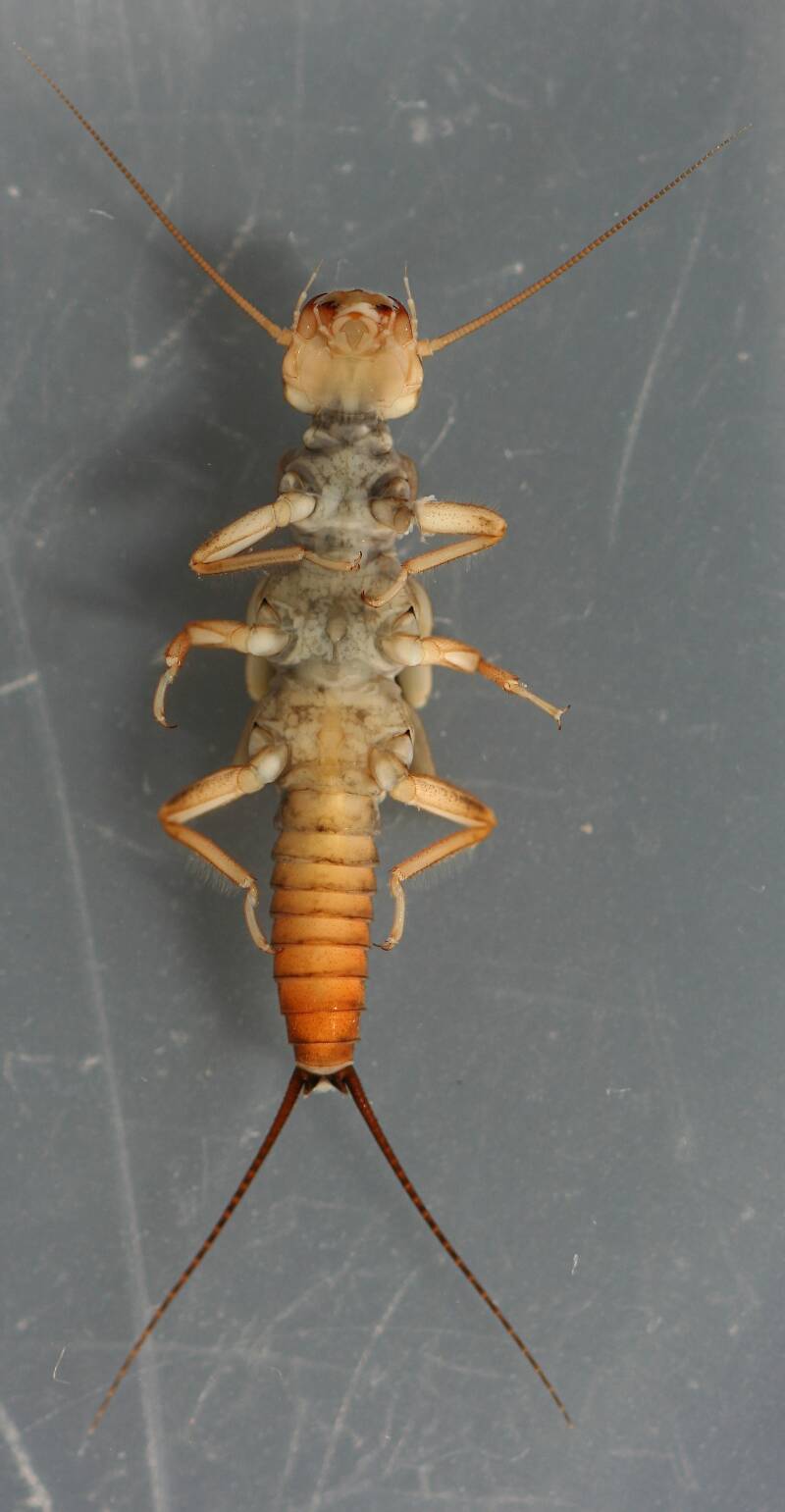
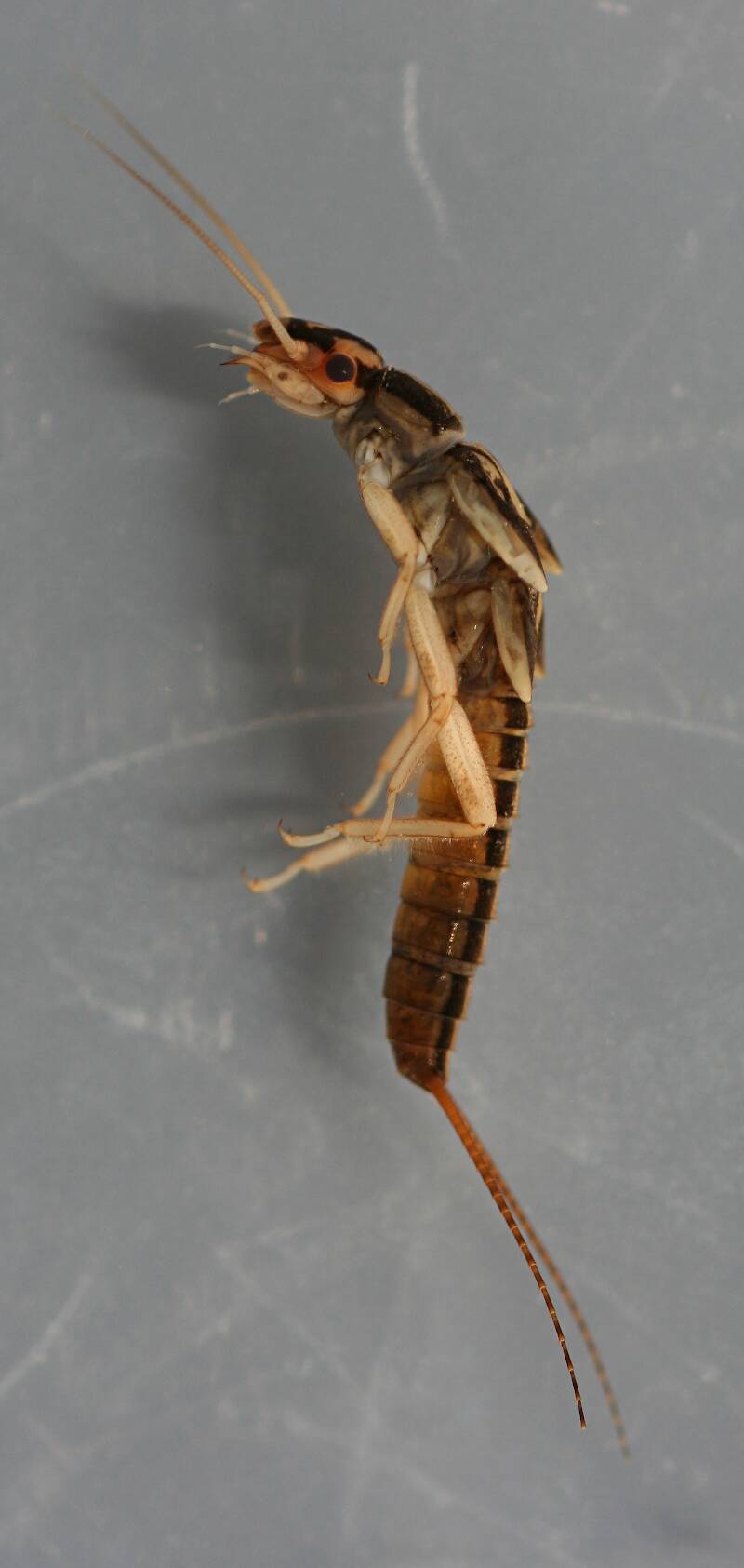
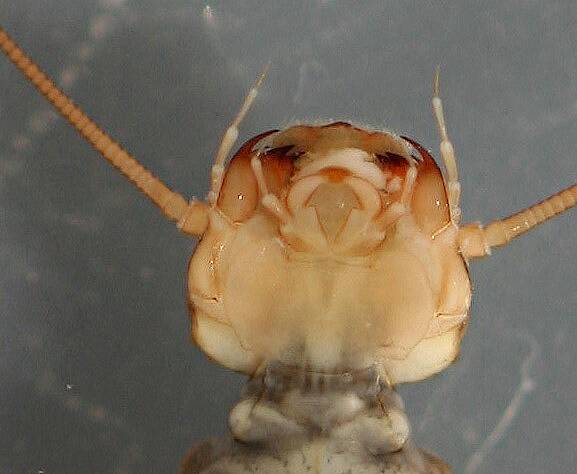
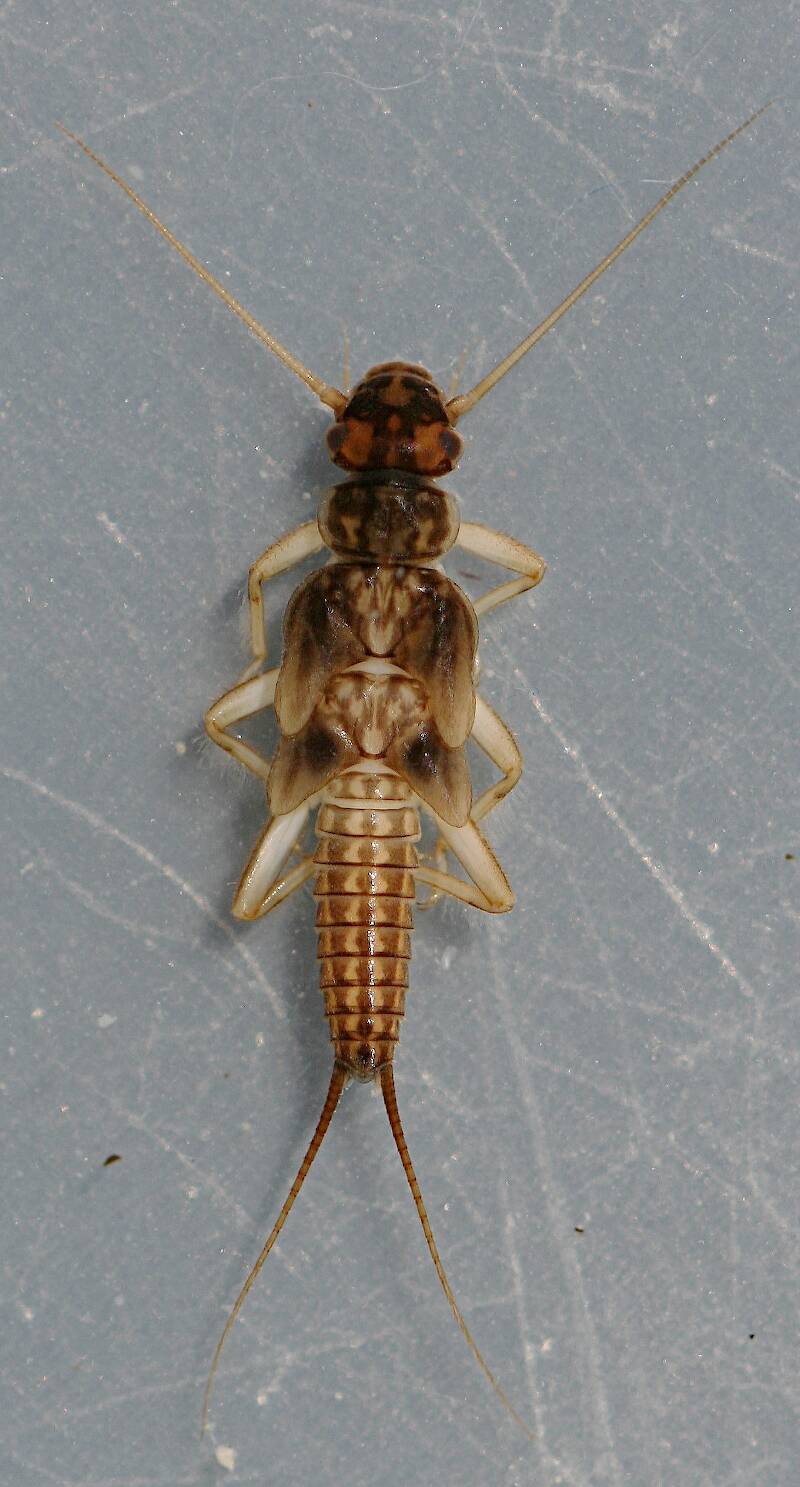
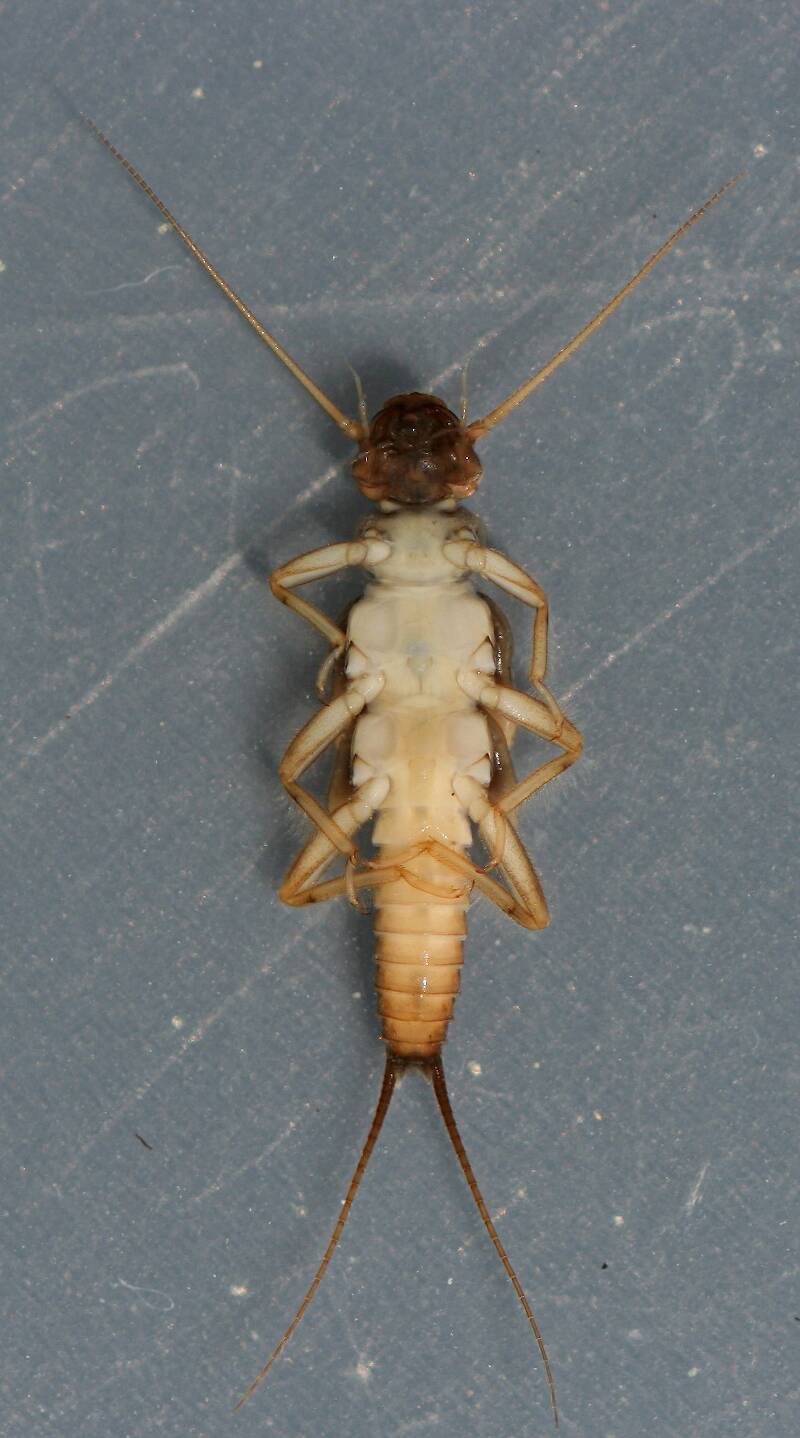
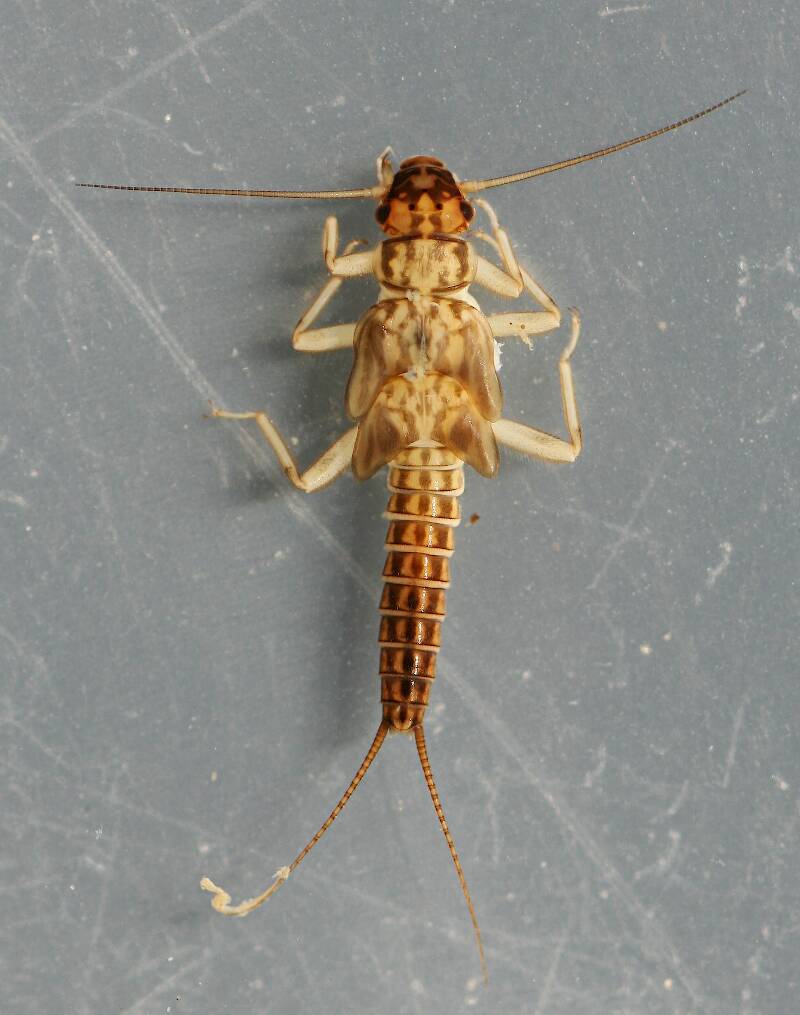
Millcreek on Sep 3, 2014September 3rd, 2014, 11:10 am EDT
These two Isoperla nymphs are common in the Russian River in the early part of the year (late January to mid April). As far as I can determine they're Isoperla marmorata and Isoperla mormona. I used Merritt, Cummins and Berg as well as "Nymphs of North American Stonefly Genera" by Stewart and Stark to identify the nymphs to genus. I used Sandberg's "The Isoperla of California (Plecoptera: Perlodidae); Larval Descriptions and a Key to 17 Western Nearctic Species" to identify them to species. http://www2.pms-lj.si/illiesia/papers/Illiesia07-22.pdf .
Sandberg's key is for male larvae and the photos of Isoperla marmorata shown here are female but identification was made with male specimens.
All specimens were in alcohol but the photos were taken within 12 hours of collection so the coloration is accurate.
Sandberg's key is for male larvae and the photos of Isoperla marmorata shown here are female but identification was made with male specimens.
All specimens were in alcohol but the photos were taken within 12 hours of collection so the coloration is accurate.
"If we knew what it was we were doing, it would not be called research, would it?"
-Albert Einstein
-Albert Einstein
Oldredbarn on Sep 3, 2014September 3rd, 2014, 2:27 pm EDT
Nice pics! If you have it, could you give us a ball-park measurement on these?
Thanks!
Spence
Thanks!
Spence
"Even when my best efforts fail it's a satisfying challenge, and that, after all, is the essence of fly fishing." -Chauncy Lively
"Envy not the man who lives beside the river, but the man the river flows through." Joseph T Heywood
"Envy not the man who lives beside the river, but the man the river flows through." Joseph T Heywood
Millcreek on Sep 3, 2014September 3rd, 2014, 6:28 pm EDT
Nice pics! If you have it, could you give us a ball-park measurement on these?
Spence, The measurements are in the captions under the photos. 14 mm for I.marmorata and 7-8 mm for I. mormona. The measurements are for body length and don't include the cerci.
"If we knew what it was we were doing, it would not be called research, would it?"
-Albert Einstein
-Albert Einstein
Oldredbarn on Sep 3, 2014September 3rd, 2014, 8:40 pm EDT
How did I over look that?!
Thanks.
Thanks.
"Even when my best efforts fail it's a satisfying challenge, and that, after all, is the essence of fly fishing." -Chauncy Lively
"Envy not the man who lives beside the river, but the man the river flows through." Joseph T Heywood
"Envy not the man who lives beside the river, but the man the river flows through." Joseph T Heywood
Entoman on Sep 3, 2014September 3rd, 2014, 10:27 pm EDT
Thanks for the link, Mark. Going beyond genus with Stoneflies and Caddis is often much more difficult as access to the literature is not easy or cheap. Kudos for sharing. Stones are especially fun as many if not most have determinative characters that can be identified in photos.
"It's not that I find fishing so important, it's just that I find all other endeavors of Man equally unimportant... And not nearly as much fun!" Robert Traver, Anatomy of a Fisherman
Millcreek on Sep 4, 2014September 4th, 2014, 6:57 am EDT
Thanks for the link, Mark
You're welcome. It is harder to find literature on Plecoptera or Trichoptera but there are a few sites that are useful.
For Plecoptera, Illiesia Journal has a wide range of articles on Plecoptera by experts in the field. It can be accessed here: http://www2.pms-lj.si/illiesia/html/papers.html. The only problem with the site is it doesn't seem to have a search function (or I'm missing it) so you have to scroll through a listing of articles.
For Trichoptera, the University of Minnesota has the Trichoptera Literature Database at; http://www.trichopteralit.umn.edu/.
For both plus Ephemeroptera, JSTOR has limited free access to articles. You have to register with them to gain access which can be done here: http://about.jstor.org/rr.
For Ephemeroptera there's Ephemeroptera Galactica. Only problem with it is you need to know the author of the paper you're looking for. It used to have a limited search function but after Michael Hubbard died and the site was administered by others this seems to have disappeared. The articles are here: http://www.ephemeroptera-galactica.com/mfbib.php.
And of course Google, Google Scholar and Google Books are all good scources.
How did I over look that?!
Spence - I did some editing on the captions, so if you were looking then the measurements may not have been there. Or it was brain slippage. :)
"If we knew what it was we were doing, it would not be called research, would it?"
-Albert Einstein
-Albert Einstein
Oldredbarn on Sep 4, 2014September 4th, 2014, 3:01 pm EDT
Spence - I did some editing on the captions, so if you were looking then the measurements may not have been there. Or it was brain slippage. :)
Brain slippage...I like that. You are so nice to this old coot! :)
Spence
"Even when my best efforts fail it's a satisfying challenge, and that, after all, is the essence of fly fishing." -Chauncy Lively
"Envy not the man who lives beside the river, but the man the river flows through." Joseph T Heywood
"Envy not the man who lives beside the river, but the man the river flows through." Joseph T Heywood
Quick Reply
Related Discussions
Topic
Replies
Last Reply
0
Feb 21, 2018
by Millcreek
by Millcreek
4
May 11, 2017
by Millcreek
by Millcreek

